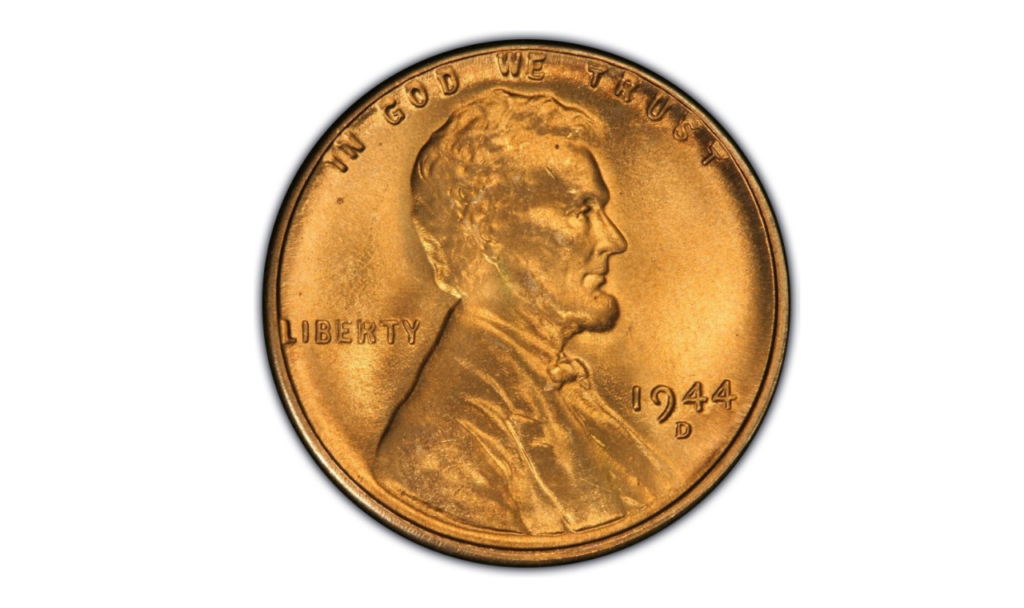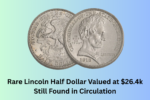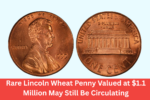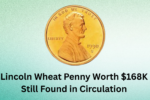A recent viral claim that a Lincoln Wheat Penny is worth $18.9 million and still in circulation has sparked widespread fascination and confusion among coin collectors and casual observers alike. While the story sounds like a numismatic fantasy come true, the truth behind this headline reveals a more grounded, albeit still fascinating, story about rare coins, historical errors, and what truly makes certain pennies worth thousands not millions of dollars.
The Origins of the Lincoln Wheat Penny
The Lincoln Wheat Penny, officially known as the Lincoln cent, was first minted in 1909 to commemorate the 100th anniversary of Abraham Lincoln’s birth. Designed by Victor David Brenner, the coin features Lincoln’s profile on the obverse and two stalks of wheat on the reverse hence the nickname “Wheat Penny.”
Minted until 1958, these pennies are a common find among coin collectors due to their historical significance and often sentimental value. However, certain varieties especially those with minting errors or unusual compositions have become highly prized in the numismatic world.
Viral Rumors vs. Verified Sales
The claim that a Lincoln Wheat Penny is worth $18.9 million and still in circulation has not been substantiated by any reputable numismatic or auction source. No such sale or valuation has been confirmed by authorities like the United States Mint or prominent auction houses like Heritage Auctions.
While no Lincoln Wheat Penny has approached the $18 million mark, some rare varieties have indeed sold for impressive sums:
- A 1943-D Bronze Lincoln Cent sold for $1.7 million in a private transaction in 2010.
- A 1943 Copper Lincoln Penny, a famous mint error, sold for $840,000 at auction.
- A 1958 Doubled Die Obverse Penny has fetched more than $300,000 at public sales.
These figures, though staggering, are a far cry from the rumored $18.9 million. The source of this rumor likely stems from viral social media posts or clickbait articles with no credible citation or auction record.

Why Are Some Pennies Worth So Much?
To understand the high value of certain pennies, it’s important to know what drives rarity:
- Mint Errors – Coins that were struck on the wrong metal planchet or have doubling in the text (known as “doubled die”) are among the most valuable.
- Low Mintage – Coins produced in smaller numbers, especially from specific mints like the San Francisco or Denver Mint, tend to be more desirable.
- Historical Significance – Coins marking a change in design or metal composition (e.g., during World War II) carry extra historical and collector value.
- Condition and Grading – Coins in pristine condition, particularly those graded by professional services like PCGS or NGC, often fetch higher prices.
For instance, the 1943 Copper Penny is a product of wartime error. In 1943, pennies were supposed to be minted in steel to conserve copper for military use. A small number were mistakenly struck on copper planchets left over from the previous year, creating a highly valuable anomaly.
Are There Valuable Pennies Still in Circulation?
While it’s highly unlikely that an $18 million penny is circulating in the wild, experts say valuable coins do occasionally turn up in pocket change — albeit rarely.
According to numismatists, some examples still worth hunting for include:
- 1943 Copper Penny
- 1955 Doubled Die Penny
- 1969-S Doubled Die Obverse
- 1972 Doubled Die Penny
- 1992 Close AM Penny
Each of these coins features a distinct visual anomaly or minting error. For a complete guide to spotting these details, visit the United States Mint coin facts page.
What Should You Do If You Find a Rare Penny?
If you suspect you’ve found a valuable Lincoln Wheat Penny or another rare coin:
- Do not clean it – Cleaning can damage the coin and reduce its value.
- Compare it with known varieties – Use trusted resources like the Coin Collectors Blog or PCGS Price Guide.
- Get it authenticated – Submit the coin to a professional grading service such as PCGS or NGC for official verification.
- Consult with experts – Reputable dealers or auction houses can guide you on next steps if the coin has real market value.
Final Thoughts
The story of the $18.9 million Lincoln Penny is more myth than reality, but it highlights a real-world excitement around coin collecting and the treasures that may lie in plain sight. While it’s unlikely you’ll find a penny worth millions in your wallet, staying informed and learning what to look for can still lead to surprising finds.
So next time you empty your change jar, take a closer look you never know when history might be hiding in your pocket.

Pankaj Kumar is a journalist at Chandigarh X, covering admit cards, recruitment, and government schemes. His articles provide readers with detailed insights into application processes, eligibility, and exam updates.
Outside of work, Pankaj enjoys traveling, fitness, and cricket, often participating in local matches on weekends.



